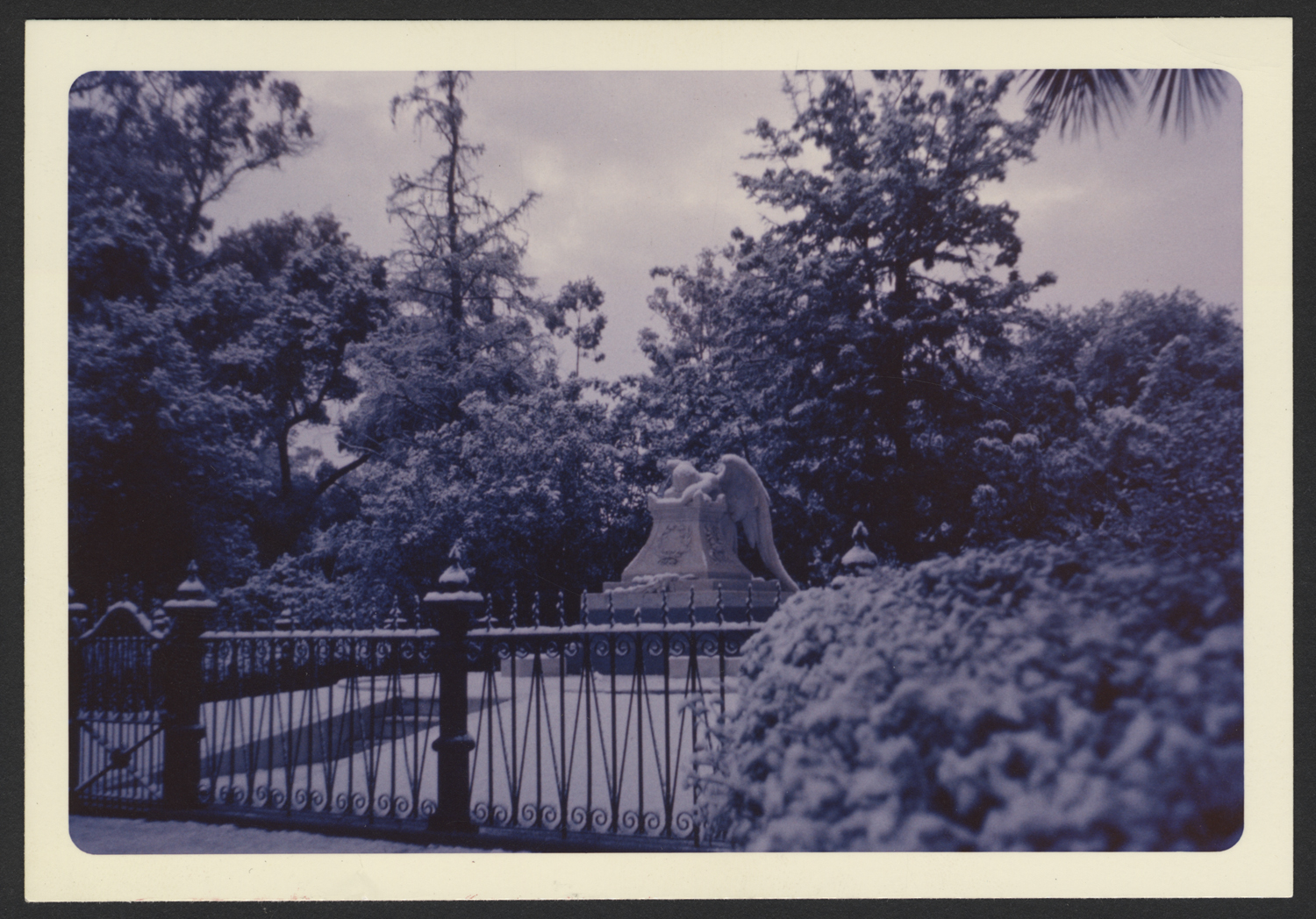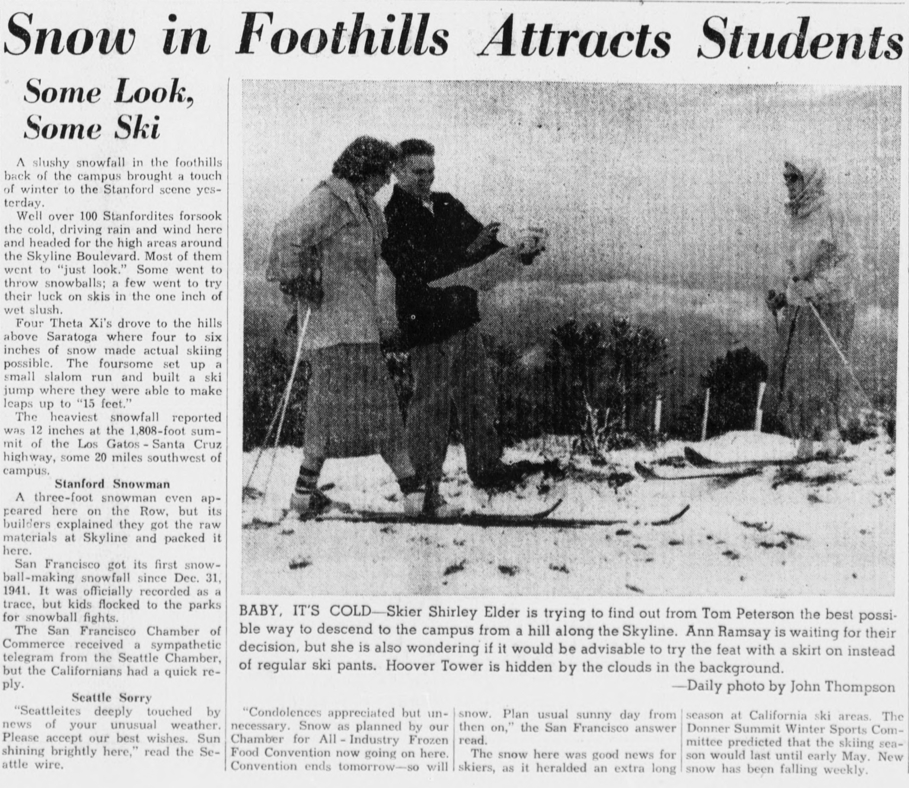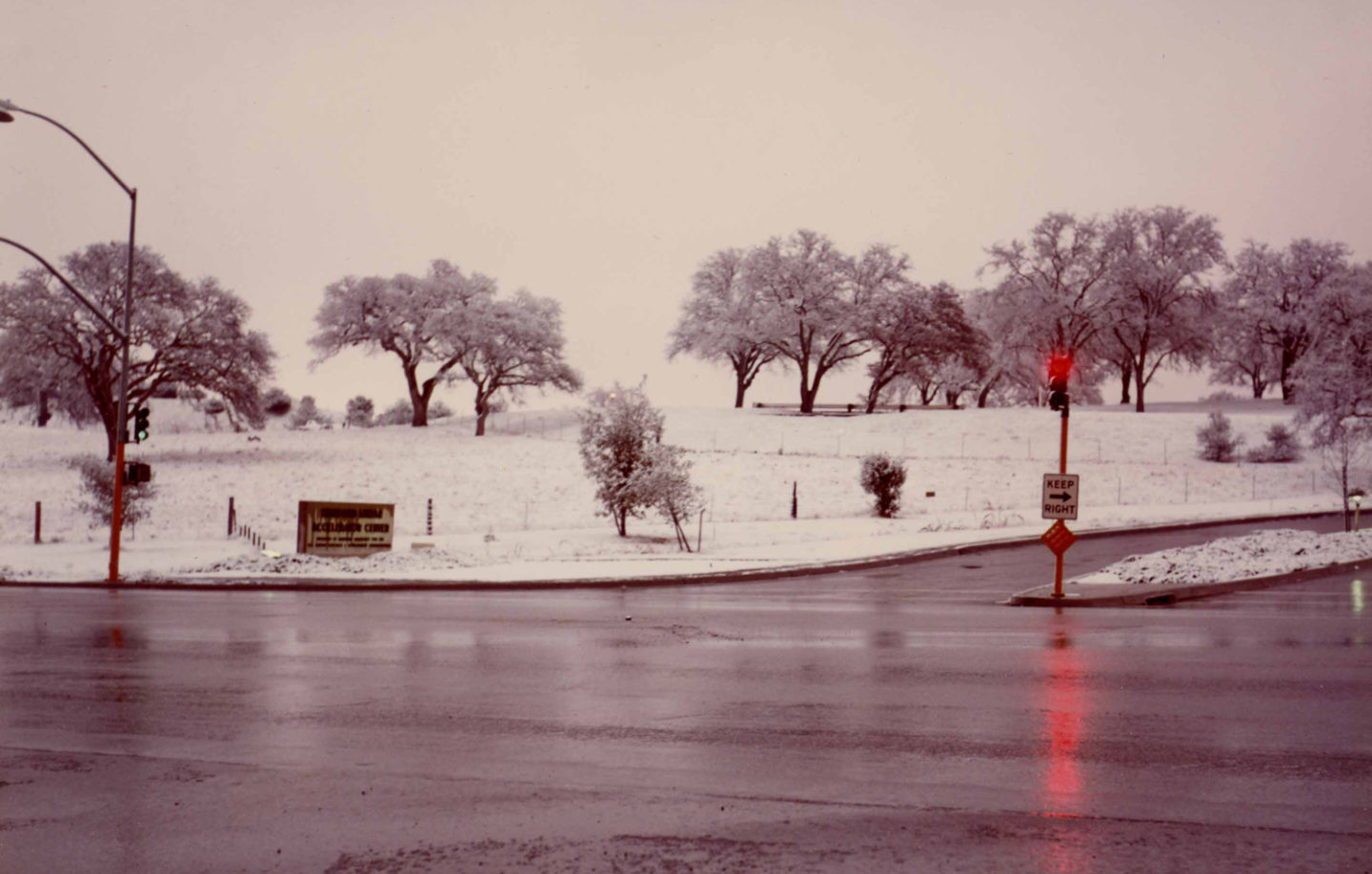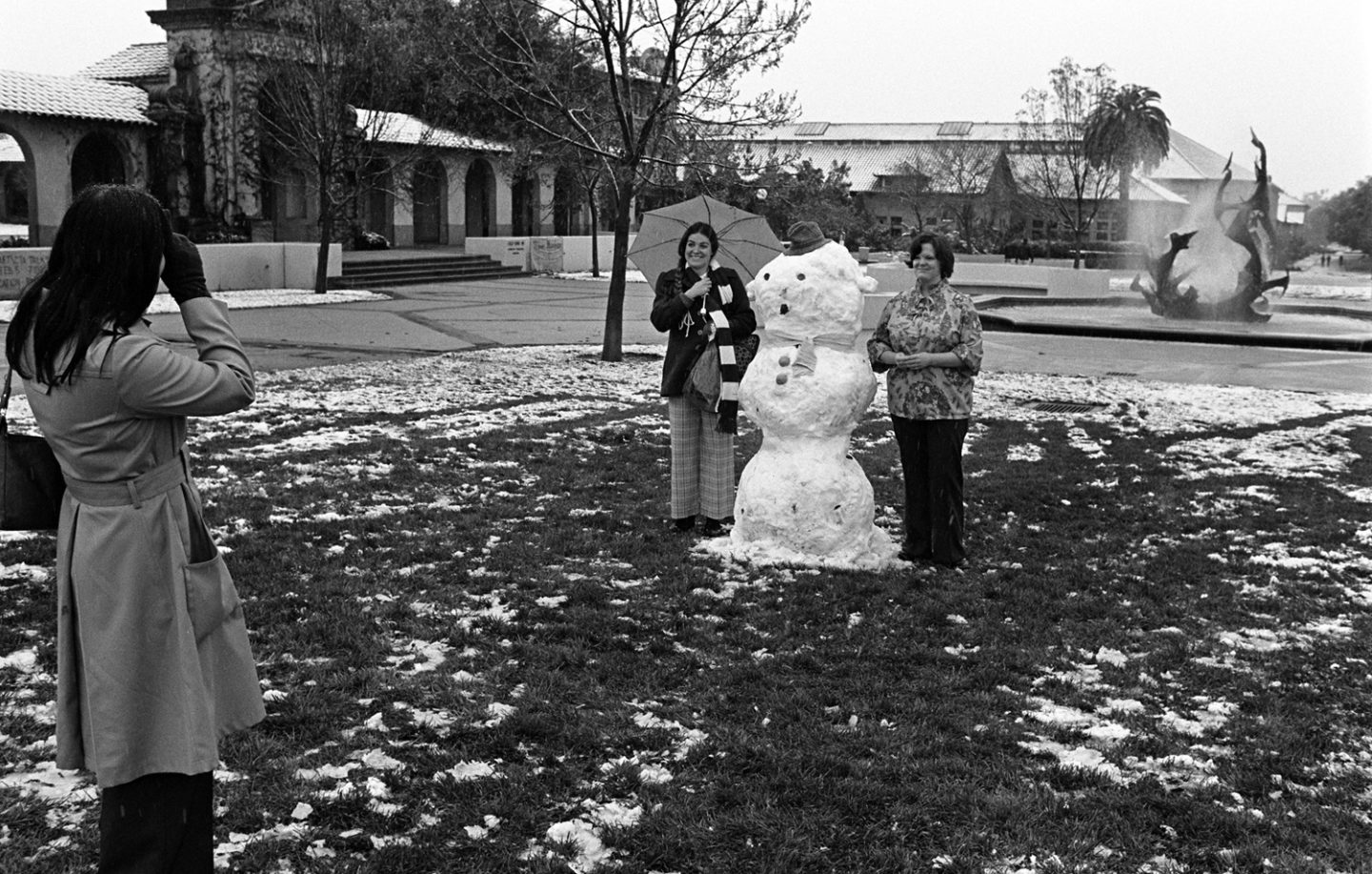Though Stanfordites have hailed their alma mater countless times since the song’s composition in 1892, only twice do the heavens seem to have replied.
On Jan. 11, 1950, and April 3, 1999, actual hail hit the normally temperate campus, giving Stanford a chance to demonstrate the resilience with which it greets rare events.
In 1950, the Stanford Daily reported, hail “temporarily stopped educational processes as Farm professors observed a few minutes’ silence while the icy stones battered the tile roofs.”
The 1999 storm knocked out power in the third inning of the Washington State baseball game. It forced players and fans in Sunken Diamond “to watch the umpire for the count on pitches,” the Daily reported, while “a student broadcasting the game on KZSU radio used a telephone for several innings” and “the public address announcer took to a bullhorn to declare the score.”

Slightly less rare is snow, which has dusted the Farm at least five times since Jane and Leland Stanford began building the university campus in 1887. A freak snowfall greeted early building crews on Feb. 5 of that year, only months before the university’s cornerstone was placed in the Quad.
It snowed again on March 11, 1922, according to the Daily; on Jan. 12, 1932, and again on Jan. 21, 1962.
Dormitories rang with shouts of excitement and disbelief as residents rushed to get out into the snow before it melted away. A few groups of men loaded themselves into convertibles or pick-up trucks and drove around campus showering others with large supplies of snowballs. By late morning it was melting fast, until snow was left only in patches and sprinkled on trees and bushes.
— Stanford Daily, Jan. 22, 1962
The most recent recorded snowfall was more than 40 years ago, on Feb. 5, 1976.
Unlike earlier snows, which were bracketed with rain, the 1976 event followed days of clear, warm weather. As a result, Lagunita’s bed remained dry enough to support a base for cross-country skiing, while the Lambda Nu house, “a beach house replete with sunbathers earlier this week, suddenly seemed to become a ski lodge, with snow-revelers sledding down nearby hills and unleashing snowballs at passersby.”
Once again, Stanford baseball took a hit. Coach Ray Young canceled practice the day before the season opener, quipping, “I’ve ordered 28 pairs of snowshoes for the team so we’ll be able to play the game.”
Presciently, the Daily observed: “It may be another 14 years before it snows again, because warming trends are predicted.”
Most of the time, Stanford students have enjoyed their cold weather someplace else.
Stanford has had a ski club since 1934, when Swiss emigre and associate professor Felix Bloch, later to win a Nobel Prize in physics, became a founding sponsor. Starting in 1951, KZSU broadcast “Ski Tips,” its Thursday night report of snow conditions 150 miles away in the Sierra Nevada, in time for students to make weekend ski plans.
More common at Stanford than cold snaps, and potentially more serious, are the tropical Pacific winter storms that dump large amounts of rain on the West Coast within a few hours.
In February 1998, floods from an El Niño storm damaged 70,000 books in Stanford libraries. Students streamed to Green Library, passing books hand-to-hand to safety. A freeze-drying procedure was employed to save most of them.
Today, university officials prepare vigorously for potential emergencies including extreme weather.
Learn how Stanford tests its emergency response through simulation drills, including an earthquake scenario in November 2016.
Learn about AlertSU, Stanford’s emergency notification system.









